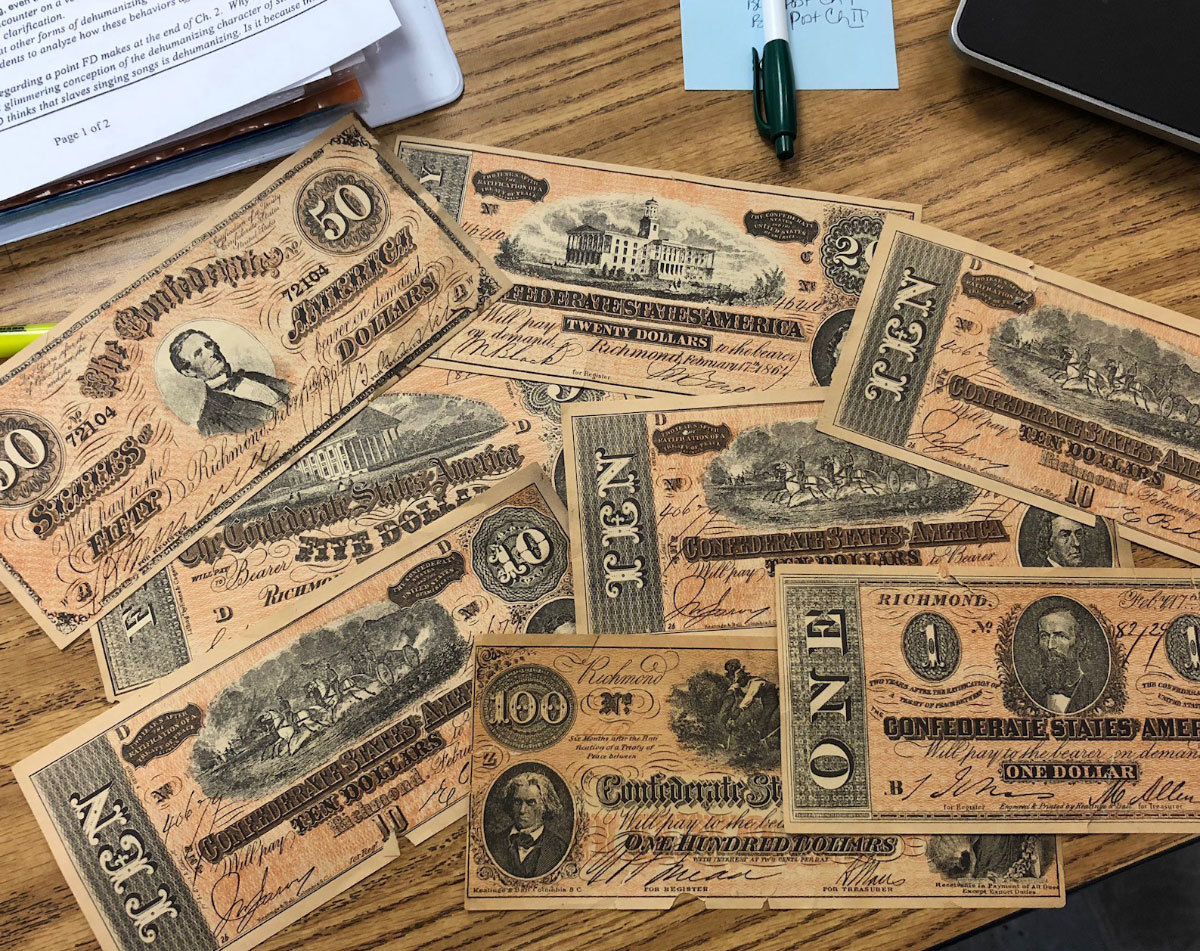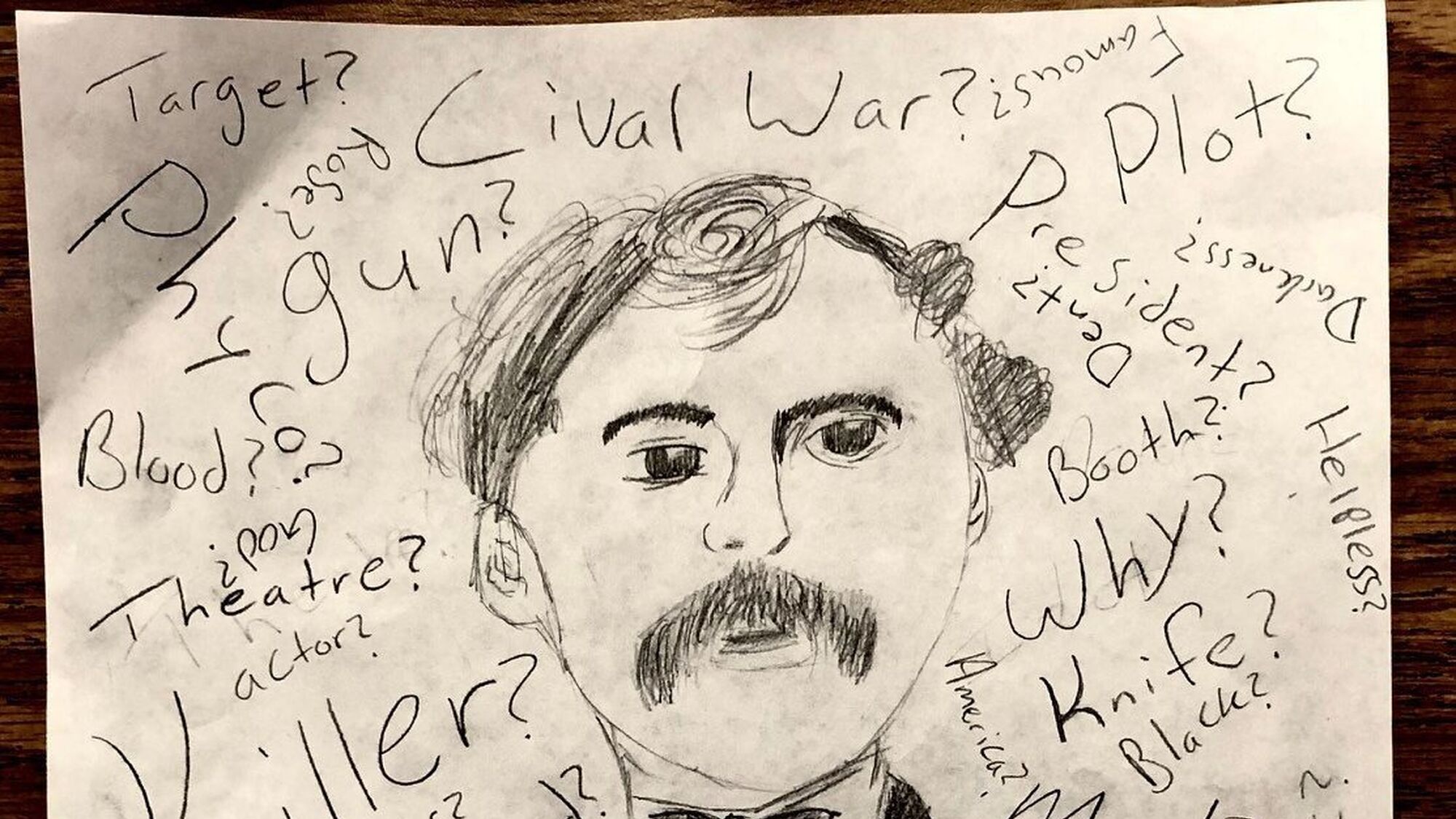I read Chasing Lincoln’s Killer by James Swanson with my seventh-graders early this semester.
About every two chapters or so, they wrote a response to a question I had posed to help them comprehend the text as well as think critically about some of the questions and topics it raises.
Because our students have plenty of independent reading time in their literature-focused Humanities class, I chose to read-aloud Swanson’s book. I also think it’s important to model reading, so from cover to cover, the students followed along while I read. Well, most of them followed along.
One day as I was reading, I noticed that whenever I glanced up from my book to check the class, one boy who sat at the back of the room quietly maintained eye contact with me. Apparently, he was listening. He was also making connections because the next day his father gave him permission to bring some actual Confederate States of America bills to school. Arranging the money on my desk for the photo below, there was no doubt that he had been paying attention even though he hadn’t been “following along.”

Another student — I’ll call him Joe — sketched on a sheet of paper as I read over the course of three or four class periods. Early on, I asked him to follow along once or twice and finally decided that I wouldn’t ask again, especially when I looked at the drawing that he dropped into the seventh-grade basket at the end of class each day.
He was working on a portrait of John Wilkes Booth from a photo in the book. Each day he would retrieve it from the basket (where I had left it), so he could add to it during that day’s reading. He surrounded the portrait with words as questions. It was interesting and thought-provoking and showed that he was indeed paying attention during the reading. He may not have been “following along,” but he was definitely engaged.
So just because a student isn’t following along, I shouldn’t assume he or she isn’t paying attention and learning. In fact, Joe and his drawing have caused me to consider how other kids may better show their understanding (and misunderstanding, too — let’s be real) through drawing or sketching. Recording their thinking must not always result in producing a written response, after all.
Thanks for reading! Our next step in the unit was to watch The Conspirator, a Robert Redford-directed movie that focuses on the trial of Booth’s conspirators, including Mary Surratt, the owner of the boarding house where the assassination was purportedly planned. The end result? An essay that argued Surratt’s innocence or guilt. I’ll write about that project in a future post.
. . .
Follow my blog for more stories about middle school ELA.


